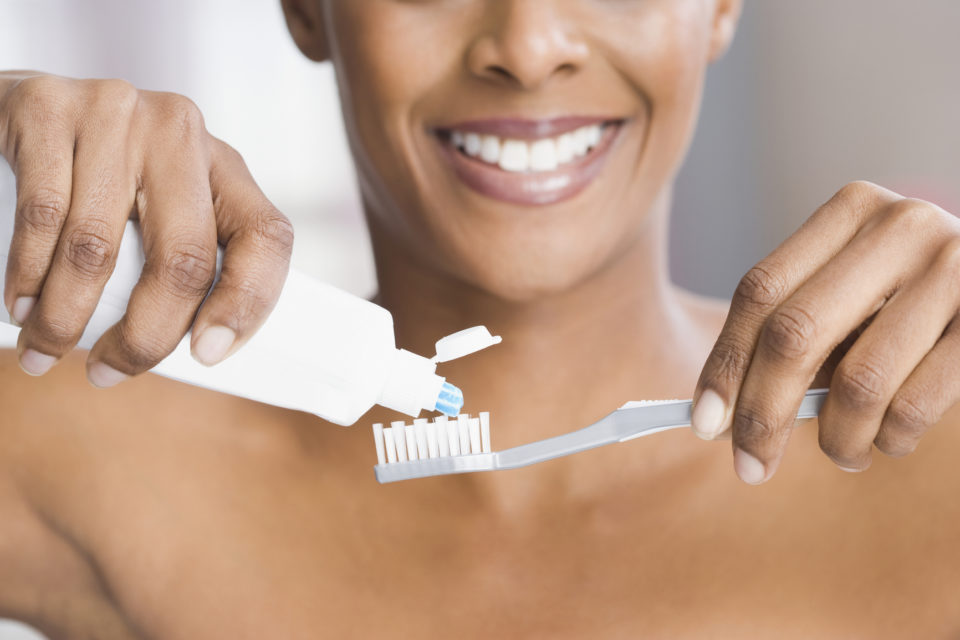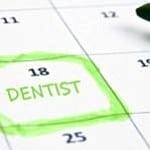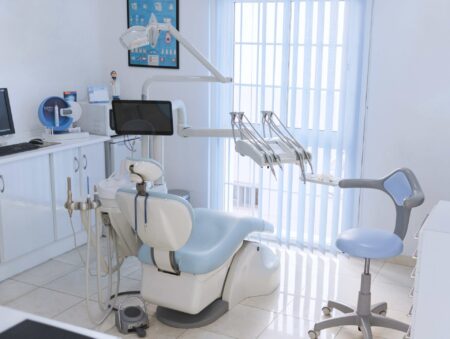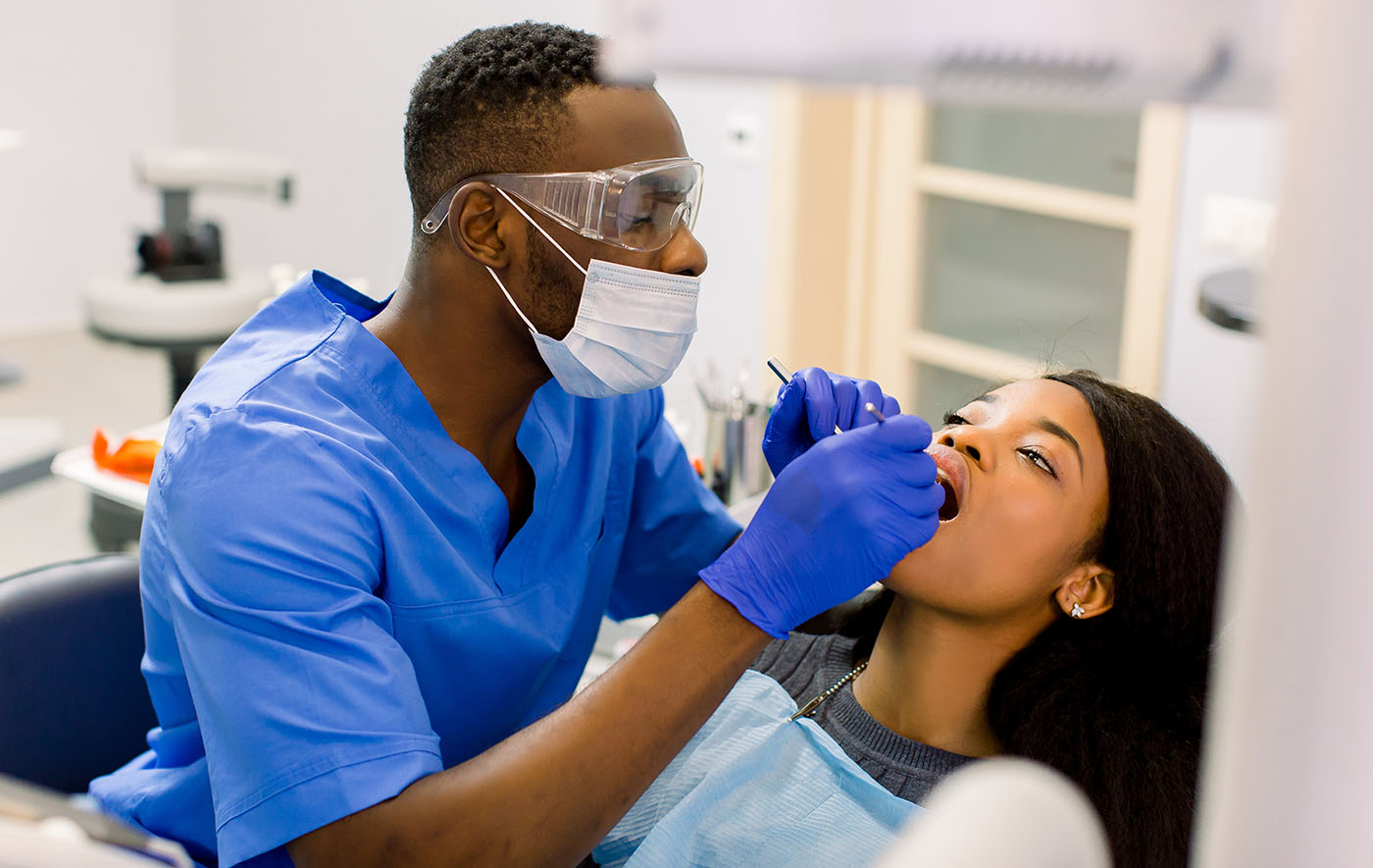Table of Contents
Maintaining oral health starts with healthy hygiene habits, but may not be so simple for those with underlying medical conditions. People of color or multiracial people may face more challenges in receiving quality dental care. Oral diseases are more common for African American adults and may stem from a lack of care as children, both from their immediate community and the system.
Below, we answer some important questions about oral health, including what it is and why it’s important, potential complications of poor oral health, barriers for Black people, and what is currently being done or should be to address them.
The Importance of Oral Health
From dental caries to gum disease, oral health conditions can range from mild to severe. Seeing your dentist regularly can help prevent many problems and treat others before they worsen. Many physical health problems can contribute to poor oral health and poor oral health can cause additional ones, so preventing tooth decay and other dental conditions is vital to good general health.
Common Oral Health Conditions
Oral health problems can include the teeth, gums, the bones that support the teeth, the tongue, the back of the throat, and more. The three most common conditions that many people face are cavities, gum disease, and cancer.
- Tooth Decay (Cavities): Also called dental caries, cavities are small holes in the surface of the tooth’s enamel caused by acids from sugary foods and bacteria caused by plaque. They are most common along the gumline and in hard-to-reach crevices where it’s difficult to brush.
- Gum Disease (Periodontal Disease): Gum disease is more common than you think and nearly half of adults over 30 have experienced it. It is caused by inflammation or infections in the gums and bone that support the teeth. It may be preventable in some cases with good oral hygiene. However, some underlying conditions and risk factors also play a role, such as having a weakened immune system or family history.
- Oral Cancer: Tobacco use and alcohol are the two most common causes of oral cancer. Human papilloma virus, or HPV, may also contribute to oropharyngeal cancers located in the back of the throat. Routine oral cancer screenings, especially for those with risk factors, are essential for early treatment.
Poor Oral Health Risk Factors

While poor hygiene is one of the biggest risk factors for tooth decay and gum disease, they are not the only ones. For example, diabetes decreases your ability to fight infections and can lead to periodontal disease and tooth abscess, which can be difficult to treat with underlying health conditions. Osteoporosis can lead to bone loss and tooth decay over time, especially with increased age. You should discuss any underlying health concerns with your dental hygienist and dentist so they can make you aware of any potential links between your oral and physical health.
Possible Oral Health Complications
Poor oral health does not stop at your teeth and gums. In addition to contributing to tooth decay and gum disease, oral health can affect physical health. For example, endocarditis is an infection of the lining inside the chambers of your heart. It’s caused by bacteria, usually from the mouth, spreads through the bloodstream. Similarly, poor oral health can contribute to more chronic conditions like heart disease.
Breaking It Down (by Age Group)
The Center for Disease Control and Prevention (CDC) details the disparities in oral health and those who are most at risk based on age, income, education level, and more. One such statistic is the oral cancer survival rate, which is lower among Black men compared to White men. This is largely because Black people are more likely to smoke. Other factors for oral health problems can be broken down by age group.
Children (up to age 19)
Approximately 28% of non-Hispanic Black children have had dental caries in their “baby teeth” compared to 18% of White children. Children in low-income homes, including African American, are three times as likely to have untreated cavities in primary teeth and twice as likely in permanent teeth. They are also less likely to receive dental sealants that can prevent cavities.
Adults (ages 20 to 64)
BIPOC, including African and Mexican Americans, are up to three times as likely to have untreated cavities as White people. Education plays a large role in dental care for this age group. Those considered low-income or without private health insurance are most likely to have untreated cavities. Smokers are at the highest risk.
Seniors (ages 65 and up)
By age 65, nearly 17% of people will have lost all their teeth. Many of them are African Americans who smoke or have less than a high school education. Older adults are much more likely to experience oral infections or chronic oral diseases as well. All of these factors play a role in overall health.
Barriers to Quality Dental Care

Getting quality dental care is a challenge for African Americans because of the system itself, socioeconomic status, and a unique culture based on generations of Black history. Combined, these can become an insurmountable barrier. Oral health disparities are especially prevalent in children of color, but can affect any age, as we learned above.
Structural Barriers
Our healthcare system has policies and procedures that lead to unequal treatment of certain populations. It also has biases that change how some receive medical or dental care based on ethnic background. These become structural barriers that unfairly target African Americans and lead to poor oral health in various ways.
- Discrimination: Approximately one third of Black people report experiencing racial discrimination within the healthcare system. A quarter have been affected by it enough to avoid dental care in the future.
- Treatment: A randomized study found that an African American would likely receive a recommendation for a tooth extraction over a root canal for a similar problem compared to a White patient. This has led to disproportionate tooth loss, especially at a younger age.
- Underrepresentation: It can be more difficult for Black people to become dentists because of socioeconomic status but also admissions standards and other policies affecting education and entrance into the field of dentistry.
Socioeconomic Barriers
According to the World Health Organization, social determinants of health (SDH) include the external factors that affect a person’s overall health. These include their income, eduction, employment, food insecurity, and more. How SDH affects Black Americans’ dental health is complex.
- Financial: Many Black people cannot afford the cost of appointments, lost income from taking time off work, and other financial burdens of dental care. Some are not able to afford fluoride toothpaste designed to prevent cavities or treat specific oral conditions.
- Awareness: Some communities do not have the educational resources to stress the importance of good oral health, regardless of average income.
- Transportation: Low income neighborhoods may not have enough dental providers nearby for those lacking reliable transportation.
- Poor Food Options: The most affordable foods aren’t always the best for oral health, which can lead to worsening conditions over time.
- Early Childhood Development: Many children don’t receive adequate dental care because caregivers are unaware of state and federal programs offering free and low cost services.
Cultural Barriers

Many Blacks were not taught the importance of oral health as children and so do not pass that down to their own. This becomes a part of culture and another challenge to overcome. Other cultural barriers include food preferences and caregiver education level.
Addressing Racial Equality in Dental Care
An article published in the Health Affairs journal in April 2022 addressed racial inequity within the healthcare system as it relates to dentistry. In it, the authors call for several actions that may help close the gap and reduce or eliminate the disparities that Black people face in understanding or seeking dental care. Here are just a few of the steps they feel should be taken:
- Changes to the electronic health records system that include dental care
- Student loan forgiveness programs for dental students of color
- Improve racial equity in dental schools, especially school admissions processes
- Expand dental benefits for adults with Medicaid
- Reward oral health programs to help motivate high-risk populations
The Healthy People 2030 initiative run by the US Department of Health and Human Services, as well as the Office of Disease Prevention and Health Promotion, also supports oral health for the Black population through a variety of evidence-based programs. Their report, containing research from over 400 contributors, details both the challenges and advancements in oral health over the last 20 years, including what has been done to help address disparities in dental care.
One such advancement is community water fluoridation. Research suggests that drinking fluoridated water helps both families and the US healthcare system save money each year on dental care by preventing dental caries. More underserved communities are now fluoridated.
Ensuring Quality Dental Care for African Americans
Periodontal disease may be common among all races, but those with any oral health problems should be able to receive the dental care they need, no matter their ethnicity, age or socioeconomic status. Unfortunately, a vast majority of Black people aren’t able to, and Black Health Matters is working to share these struggles and raise awareness of what can be done to close the gap in dental health care.





More Stories
Punching Through History: A Spotlight on Boxing Culture in England’s Reading
The Link Between Vitamin E Intake and Parkinson’s Disease
Tips and Techniques for Moving Past Binge Drinking